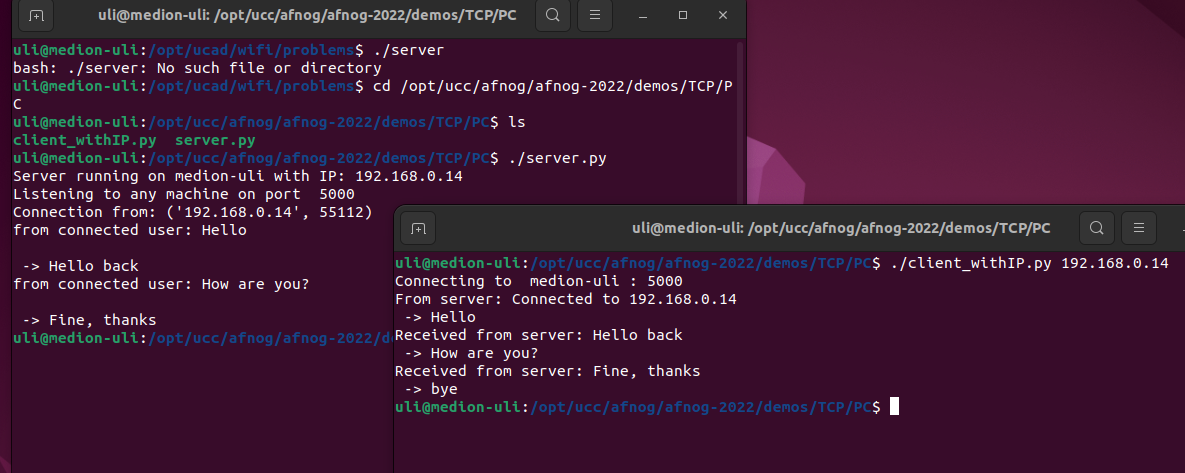
Difference: WiFi (3 vs. 4)
Revision 42022-09-04 - UliRaich
| Line: 1 to 1 | |||||||||
|---|---|---|---|---|---|---|---|---|---|
Connecting to WiFiExercise 1: | |||||||||
| Line: 24 to 24 | |||||||||
Here is a screen dump of the solution:
 | |||||||||
| Added: | |||||||||
| > > |
This is what you will see if you try to ping the ESP32:
 You can try ping also on the ESP32:
You can try ping also on the ESP32:
from uping import ping
ping("the machine_to_be-checked") | ||||||||
Exercise 3:Write a module: wifi.py which encapsulates the functionality of exercise 2. Upload the module to the /lib folder on the ESP32. | |||||||||
| Line: 39 to 47 | |||||||||
| Add a function returning the ESP32's IP address. Read the current UTC time from the network using NTP. Set the real time clock on the ESP32. Provide a function that converts UTC into your local time. | |||||||||
| Added: | |||||||||
| > > | Exercise 5 :Write a TCP server and a client program running both on the PC. The server waits for a connection request from the client on port 5000, accepts it and sends a message to the client. After that, a prompt appears on the client and the user can type a message to be sent to the server. The server prints this message and creates a prompt on its side, where a message can be entered, to be sent to the client. A ping-pong communication is started. Typing the message "bye" on the client side terminates the connection.
Exercise 6 :Move the server to the ESP32. In this case, the WiFi initialization is needed before starting the server part. Test the communication as you did in exercise 5. | ||||||||
|
-- | |||||||||
| Line: 47 to 63 | |||||||||
| |||||||||
| Changed: | |||||||||
| < < |
| ||||||||
| > > |
| ||||||||
| |||||||||
| Added: | |||||||||
| > > |
| ||||||||
View topic | History: r5 < r4 < r3 < r2 | More topic actions...
Ideas, requests, problems regarding TWiki? Send feedback